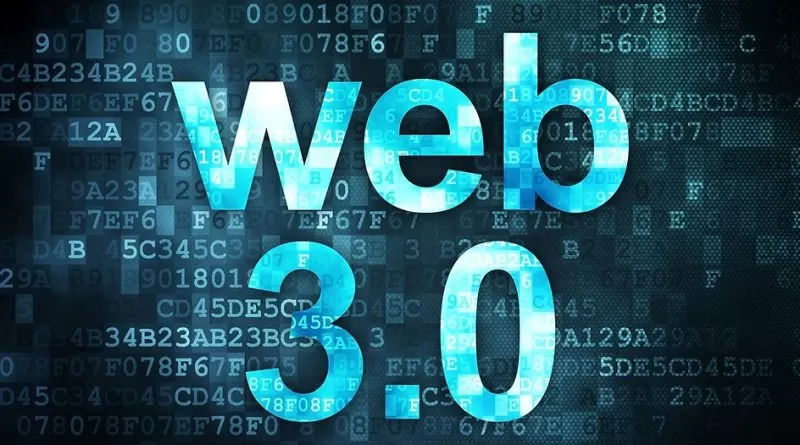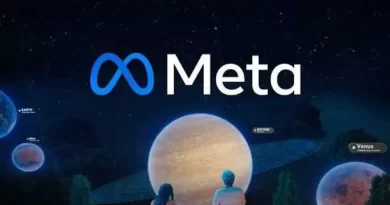Top Web 3.0 Use Cases You Should Know
The web’s expansion and continuous evolution in its infrastructure are critical to creating web technologies more accessible to users and enabling digital transformation. Originally, Web1 provided us with static websites and text-based sites to provide information to users, and Web 1.0 didn’t place any emphasis on user-based input. As a result, this web version is usually referred to as the “read-only” web. Web 2.0 was created because the next iteration of the web, pertaining to the version of the web (internet infrastructure) that we currently use. It should be open, simple to use, and interoperable with a good range of services, systems, and software products. Web 2.0 refers to an internet version that includes web and social media applications.
We are now within the process of transitioning to the next iteration of the internet, web3, the decentralized web infrastructure that has caused a revolution within the internet world. Many of us, however, are still perplexed by the core concept of web3. Additionally, businesses have begun to seem for practical use cases of web3 in order to fully realize its potential for business transformation. So, within the following section, we’ll examine web3 use cases and applications.
Use Cases of Web3
The characteristics of web3 demonstrate its ability to rework the internet experience for users. Is web3 merely a redesign of user interface elements in web applications and services? The simplest web3 use cases, on the opposite hand, tell a special story. Take a glance at the web3 use cases below to see how the concept can support a wide range of applications.
Autonomous Decentralized Organizations
Decentralized Autonomous Organizations, or DAOs, are among the most prominent blockchain web3 use cases. They’re essentially online communities owned by members of the community. The power of community governance, which depends on member consensus, is an intriguing feature of DAOs. In fact, the highlights of web3 are often found in DAOs with decentralization and autonomy.
DAO rules can’t be changed by a single person or centralized entity. Furthermore, DAOs ensure autonomy by using smart contracts to count votes and make decisions without the necessity for human intervention. If you look closely, DAOs are a prominent web3 example of on-chain governance.
By encoding specific policies in smart contracts, Decentralized Autonomous Organizations bring corporate governance to the virtual world. DAOs deserve a spot among the highest web3 use cases, particularly due to their potential to provide a governance model for web3 organizations. Surprisingly, the principles of DAOs apply to a good range of assets and organizations.
Decentralized Finance
Decentralized finance, or DeFi, is the next big answer to the question “What is web3 used for?” It’s a novel concept that relies on decentralized financial applications. Decentralized applications are general software applications linked together by a network of smart contracts. Protocols, which are smart contracts in decentralized applications, aid in the definition of specific application functionalities. The most significant benefit of DeFi decentralized apps is that they will exist for as long as the underlying blockchain does.
Furthermore, dApps built on open blockchain networks enable participation from any computer on the network. Many of us have discovered alternatives to traditional financial services thanks to the real-world web3 use cases in DeFi. DeFi, for instance, has enabled crypto lending and borrowing, allowing crypto owners to receive loans against their crypto as collateral.
Another important aspect of web3 use cases in DeFi is the payment blockchain. DeFi has enabled a payment blockchain, which permits peer-to-peer digital transactions. In fact, DeFi is one of the best web3 use cases, demonstrating a plausible increase in cryptocurrency usage.
The importance of DeFi is highlighted by the power to conduct low-cost, peer-to-peer, near-instantaneous, and borderless transactions. DeFi payment blockchain could also be the best web3 example for enabling access to financial services. Payment blockchain has the potential to significantly improve existing payment systems. For instance, cryptocurrencies are often a valuable asset for distributing aid to people who do not have bank accounts. Furthermore, DeFi uses blockchain to realize the desired transparency in order to combat abuse, waste, and fraud.
The most exciting aspect of DeFi is that it is transforming financial technology’s backend. DeFi facilitates the utilization, access, auditing, upgrading, and development of monetary services. DeFi is clearly one of the most important web3 use cases for enabling cost-effective and simple participation in the financial system. At the identical time, DeFi uses web3 principles to offer consumers complete control over the ownership of finance products.
DeFi and Web3 Connectivity
DeFi stands out among real-world web3 use cases for its numerous opportunities to improve financial inclusion. The DeFi and web3 connection is dependent on DeFi services that embrace the core values of the open internet. Here are some key points that demonstrate the relationship between DeFi and web3.
- Commitment to open-source code
- Reduced transaction fees
- Allowable accessibility
- Governance transparency and accountability
- Privacy and security supported permissionless encryption
Digital Infrastructure and Privacy
Complete transparency is the most prominent issue in existing blockchain networks. Blockchain web3 use cases for improving privacy and digital infrastructure are available. New research in cryptography’s innovative aspects, like zero-knowledge proofs, enables mathematical proofs of validity without revealing information. A user, for instance, can demonstrate to an internet site that they know the password without providing the password to the website. As a result, the user’s password would never be stored within the website’s database, ensuring safety from unprecedented attacks. Web3 solutions can ensure plausible improvements in digital infrastructure, ensuring greater privacy.
Digital infrastructure improvements, together with the best web3 use cases, depending on the protection of users’ personal data. Furthermore, web3 has increased the pliability for designing applications with enhanced privacy. Given the huge data breaches in web 2.0, data protection is clearly one of the prominent highlights among many web3 use cases. Now, web3 can function as the ideal foundation for gaining access to a suite of applications designed to improve data security.
Concurrently, web3 privacy use cases and digital infrastructure improvements may improve regulatory compliance. Users who are concerned about sharing personal information with a blockchain application or service can enjoy privacy layers.
Blockchain Video Games
The most prominent web3 example in real-world applications will draw you to blockchain-based games. The games, which are built on blockchain technology, provide personalized economies during which players have actual ownership of in-game items. Because they were the primary web3 applications, blockchain games are notable responses to the question “What is web3 used for?”
The transfer of in-game objects to other games is possible with blockchain-based games. Blockchain games have shown a promising glimpse into the longer term of gaming in their early stages. Blockchain-based games could create entirely new virtual worlds and economies with the assistance of web3 principles.
The use of decentralized technology to facilitate monetization opportunities for creators demonstrates the significance of blockchain games as one of the top web3 use cases. NFTs are utilized in blockchain-based games to assign ownership of in-game items such as avatars, skins, tools, experience points, and upgrades. Surprisingly, players can sell NFTs for fiat currency on secondary marketplaces, additionally to the ability to transfer assets between games.
Another notable feature of blockchain-based games in real-world web3 use cases is that the play-to-earn models. Axie Infinity is one of the best examples of using web3 principles in the real world with gaming. Many of us have found it to be a promising tool for earning cryptocurrency rewards by playing the game.
Metaverse
The metaverse is clearly one among the many entries in the best web3 use cases. The metaverse promises an infinite virtual world, a three-dimensional embodied internet during which users can move as digital avatars. Essentially, you’ll be watching it on the internet rather than through your computer screens. The metaverse makes use of the many web3 principles to provide users with immersive and engaging experiences. Decentralization and creator economies can be found in the metaverse. The metaverse encourages open access to all or any individuals and gives users complete control over their experiences.
However, the metaverse remains a long way from reality, with only some hints of the technology appearing on various platforms. Facebook, Microsoft, Epic Games, and a slew of other tech and business titans have recognized the worth of web3 principles in various metaverse applications.
The economy of the Creator
While you can’t exactly call creator economy a web3 use case, it’s one of the prominent highlights in the web3 landscape. The term “creator economy” refers to emerging creator communities like developers, artists, and musicians who connect directly with followers and supporters. Web3 principles are often relied on by creators to engage in seamless collaboration without the use of intermediaries.
NFTs, or non-fungible tokens, are one among the major highlights of the creator economy in real-world web3 use cases. Due to the value of uniqueness, the new class of digital assets has soared to unprecedented levels of recognition. Furthermore, high-profile NFT sales have played a crucial role in empowering creator economies. The creator economy is one of the best web3 use cases because it allows people who spend a significant amount of time online in various digital spaces to monetize their time. NFTs provide many new monetization opportunities for creators while bypassing traditional gatekeepers. As a result, the web3 creator economy use case can provide a convenient way for creators to directly sell their work.
Furthermore, followers can obtain exclusive ownership of the creator’s work, increasing their stake within the artists and creators. Other important features of NFTs in creator economy use cases are the ability to pay royalties. Smart contracts are often used by NFT owners to track secondary sales and earn royalty commissions. Smart contracts are often used by NFT owners to track secondary sales and earn royalty commissions. Most significantly, NFTs function as verifiable digital assets, paving the way for several other applications beyond creator economies.



